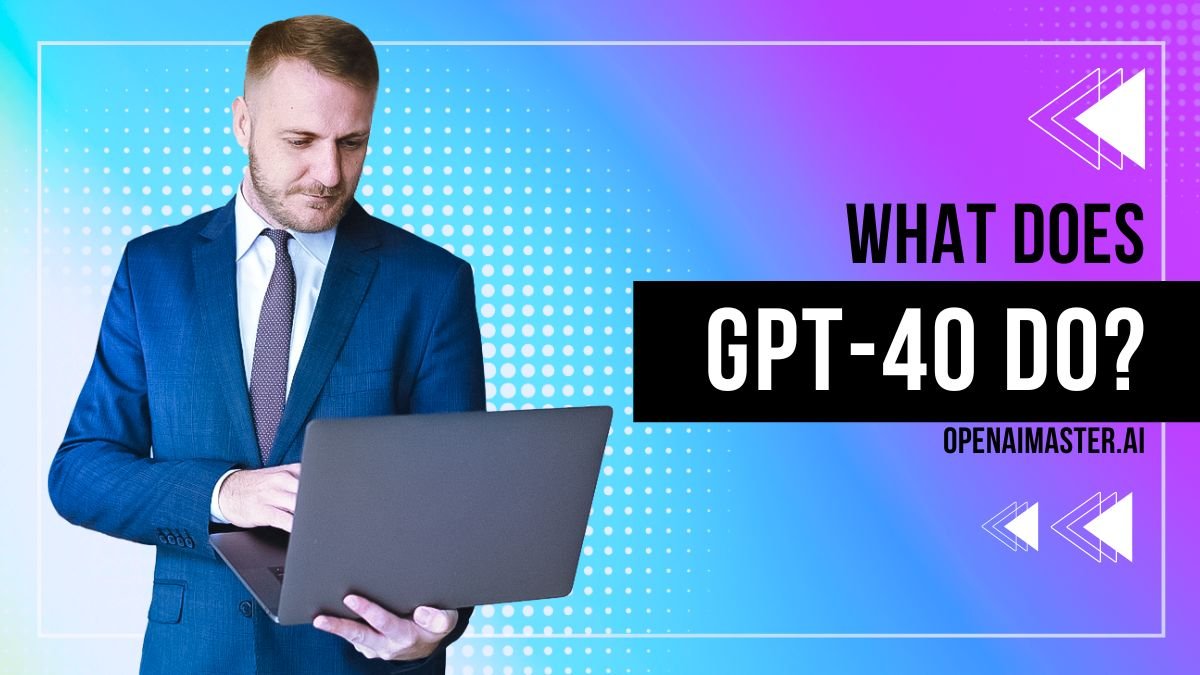Introduction
GPT-4o – an AI model that promises to revolutionize how we perceive and interact with technology. GPT-4o, or GPT-4 Omni, is a multimodal AI system that can seamlessly process and generate text, audio, and images simultaneously. This groundbreaking capability represents a paradigm shift in the field of AI, opening up a world of possibilities that were once confined to the realms of science fiction. But what exactly does GPT-4o do, and how will it shape the future of technology?
What is GPT-4o?
At its core, GPT-4o is a language model – a type of AI that can understand, generate, and manipulate human language. However, unlike its predecessors, GPT-4o is not limited to text alone. It can process and comprehend inputs from multiple sources simultaneously, including text, audio, and images.
This multimodal understanding is a game-changer, as it allows GPT-4o to perceive and interpret the world in a way that more closely resembles human cognition. For example, when processing an audio input, GPT-4o can not only transcribe the words being spoken but also recognize the tone, emotional context, and background noises, providing a richer and more nuanced understanding of the input.
Similarly, when presented with an image, GPT-4o can identify objects, interpret visual cues, and even solve equations or read text within the image in real-time. This level of visual understanding opens up a wealth of possibilities in fields such as healthcare, education, and creative industries.
What Does GPT-4o Do?
GPT-4o’s capabilities are vast and diverse, but some of its most notable features include:
Multimodal Understanding
As mentioned earlier, GPT-4o’s ability to process and comprehend inputs from multiple modalities simultaneously is its defining feature. This multimodal understanding allows for seamless integration of text, audio, and visual inputs, creating a more natural and intuitive user experience.
Enhanced Speed and Efficiency
One of the key improvements in GPT-4o is its speed and efficiency. According to OpenAI, the model can respond to queries in as little as 232 milliseconds, which is remarkably fast and comparable to human response times in a conversation. This speed, combined with its multimodal capabilities, opens up new possibilities for real-time applications such as virtual assistants, live captioning, and simultaneous translation.
Improved Multilingual Support
GPT-4o boasts significant advancements in handling non-English text, making it more accessible and inclusive on a global scale. This improved multilingual support means that users from different linguistic backgrounds can interact with the model seamlessly, without the need for complex language translation services.
Expanded Audio and Vision Understanding
GPT-4o’s audio and vision understanding capabilities are truly remarkable. It can identify emotions from speakers on camera, recognize objects and interpret visual cues, and even solve equations written on paper in real-time. These capabilities have far-reaching implications in fields such as education, where GPT-4o could be used to provide audio descriptions and real-time transcriptions, enhancing accessibility for students with disabilities.
Applications and Use Cases
The potential applications of GPT-4o are vast and varied, spanning multiple industries and domains. Here are just a few examples of how this transformative technology could be utilized:
- Real-time Translation: GPT-4o’s ability to process and generate text, audio, and images simultaneously makes it an ideal tool for real-time translation across different modalities. This could be a game-changer for international communication, breaking down language barriers and facilitating seamless cross-cultural interactions.
- Content Creation and Creativity: For content creators, artists, and writers, GPT-4o could be a powerful tool for ideation, brainstorming, and creative exploration. Its multimodal capabilities could inspire new forms of artistic expression, blending text, audio, and visual elements in novel and compelling ways.
- Accessibility in Education: In the realm of education, GPT-4o could revolutionize accessibility for students with disabilities. Its ability to provide audio descriptions, real-time transcriptions, and visual aids could create a more inclusive and equitable learning environment for all students.
- Healthcare Applications: The medical field could also benefit greatly from GPT-4o’s capabilities. From analyzing medical imaging data to providing virtual assistants for patient care, the model’s multimodal understanding could lead to improved diagnostics, treatment planning, and overall patient outcomes.
Conclusion
GPT-4o represents a significant leap forward in the field of artificial intelligence, opening up a world of possibilities that were once confined to the realms of science fiction. Its multimodal capabilities, enhanced speed and efficiency, improved multilingual support, and expanded audio and vision understanding make it a truly transformative technology.
As with any groundbreaking innovation, GPT-4o will undoubtedly raise questions and concerns about its ethical implications, privacy considerations, and potential impact on various industries and job markets. However, it is crucial to approach these challenges with an open and thoughtful dialogue, ensuring that the development and deployment of such powerful technologies are guided by principles of transparency, accountability, and a deep commitment to benefiting humanity.
Regardless of the challenges that lie ahead, one thing is certain: GPT-4o has ushered in a new era of multimodal AI, where the boundaries between humans and machines continue to blur. As we navigate this exciting frontier, we must embrace innovation while remaining vigilant about the ethical and societal implications of our technological advancements.

